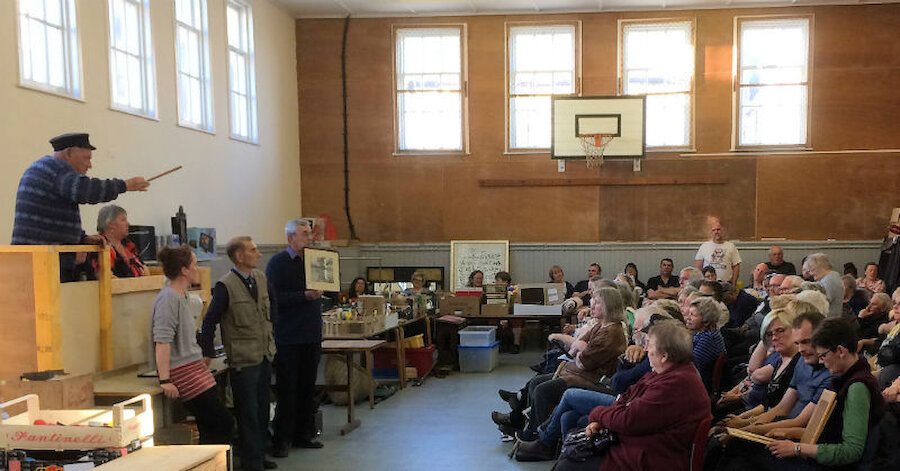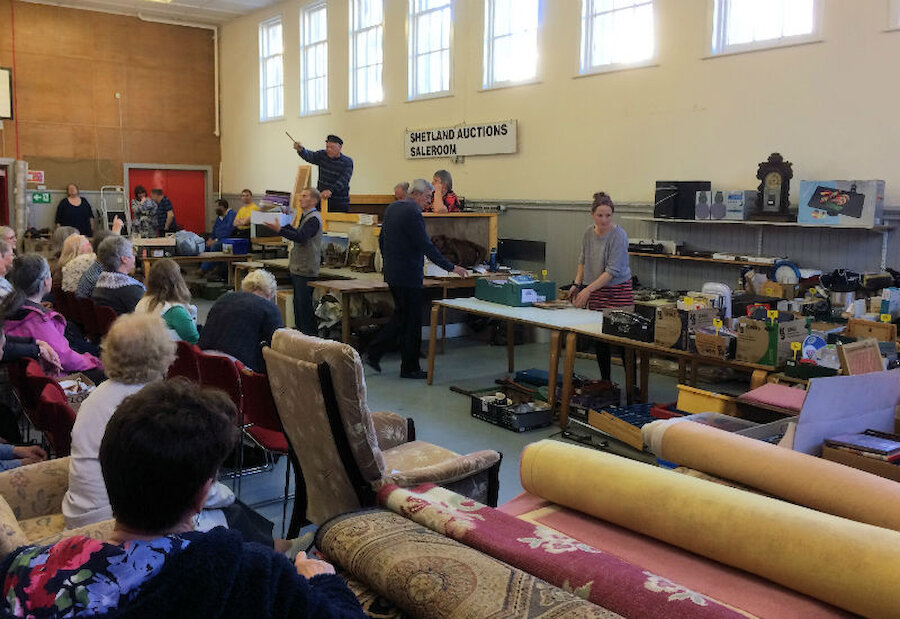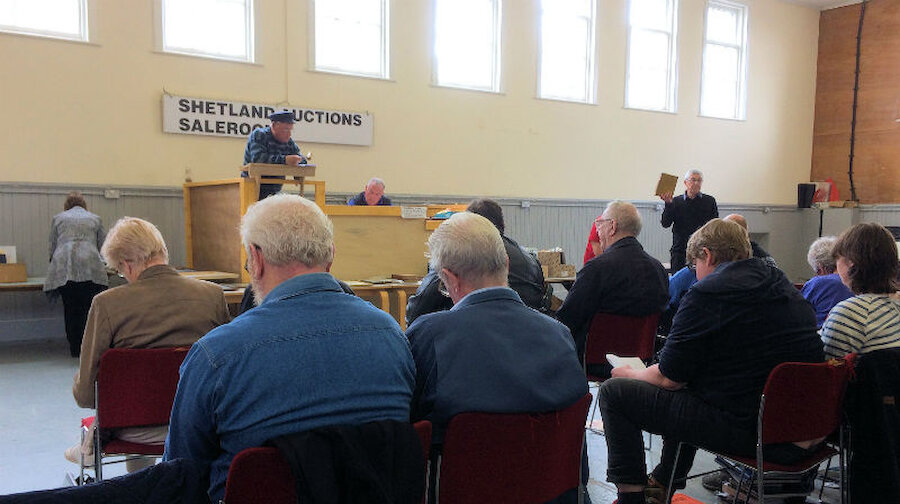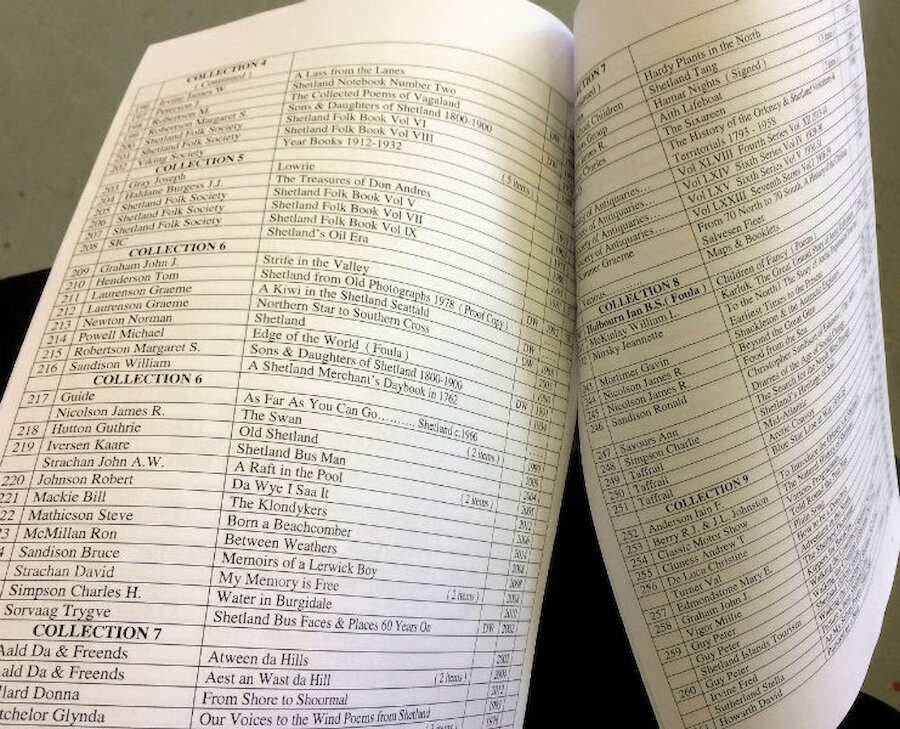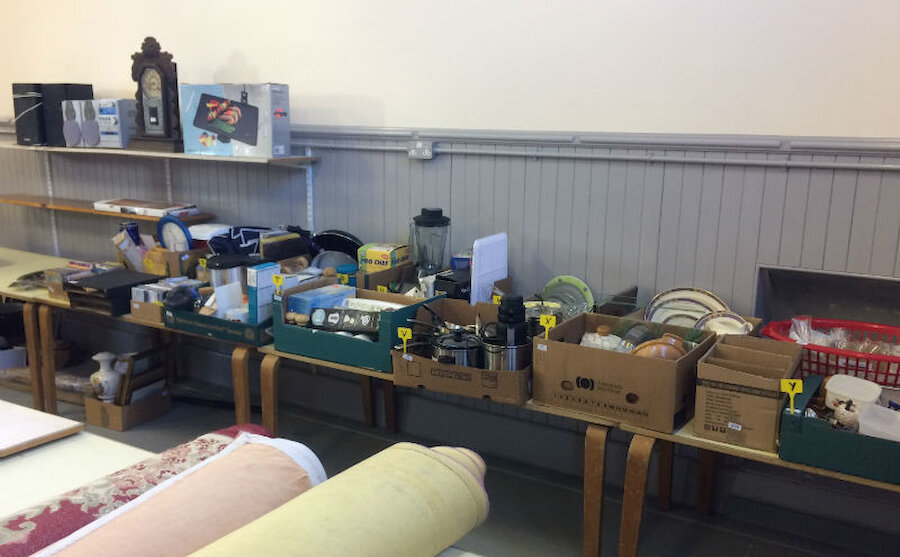To the list of job opportunities currently on offer in Shetland, it looks as though we can add that of auctioneer. The tradition of general auctions in Shetland, stretching back many decades, is – temporarily, at least – broken.
My first memories, from the 1970s, are of auctioneer Willie Peterson’s quickfire style, peppered with dry humour, at the then Shetland Marts, though he had been in action long before that at premises in the centre of the town. Another auctioneer, the late Harry Hay, left an equally strong impression.
I recall large crowds, but most of all I was struck by the number of women who combined watching the sale, and sometimes bidding, with knitting. Not infrequently, the armchairs and sofas they occupied were sold underneath them as they wielded their needles. My impression is that there seems to have been something of a shift over the years, with fewer larger items of furniture offered these days. I particularly recall Formica-topped tables achieving what seemed to me to be staggeringly high prices in the 70s, but there were bargains too, like a large Victorian four-drawer chest that I picked up for just £10.

